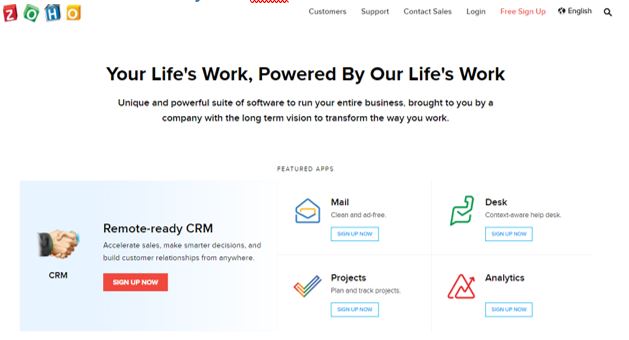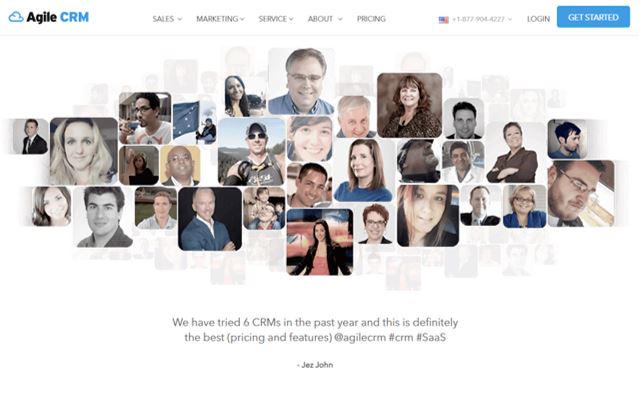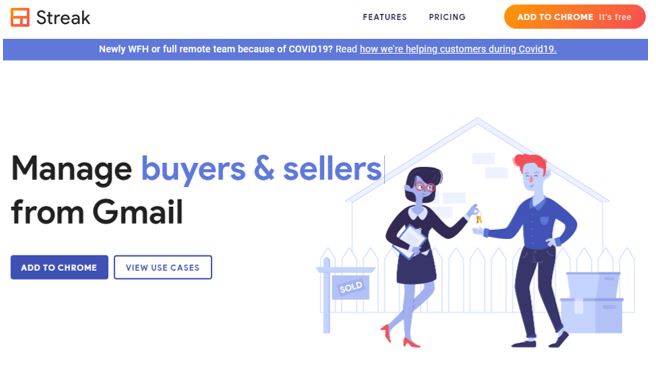In an earlier post, I talked a bit about the creation and set up of a CRM for a friend working within the medical sector. That post and task got me thinking a lot about why I selected the CRM that I did. I realized that I spent a lot of time searching for the right solution and if a “best CRM systems” post in 2020 had been available to me, I might have saved myself some effort. So I thought I’d share some of that research and thinking with you here.
Over the course of my rather long career in CX, I’ve had the pleasure and pain of working with many different CRMs. Some of them are better than others as I’m sure you’re well aware. So without further ado, here’s my list of the 5 best CRM systems in 2020.
What is a CRM?
A Customer Relationship Management (CRM) system efficiently collects data about the company-customer interaction and this information comes from a variety of sources including integrated social media handles, official websites, support logs, and testimonials, and reviews from the customers. The central database of the CRM system keeps this information for the company to analyze data for optimal decision making while addressing customers’ concerns.
In this post we’re going to be looking at five different CRM systems and will try to provide an unbiased opinion on them.
| System | Pros | Cons |
| HubSpot | Convenient connectivity to sales, service, and marketing hubs Integrated tools for tracking pipelines The efficient activity log of interactions from different sources Free CRM services | Developers are working on introducing in-depth features as the platform is relatively new Customization issues for only large businesses |
| Zoho | New business leads, client accounts, and client meetings Easy lead conversion Easy tracking of deadlines Convenient access to read-only data to all team members | Occasional bugs when entering data The upper limit on modules should be elevated |
| Agile | Adding contacts (automatically or manually) is easy via on-site form filling Banners for important updates for users Easy email reporting and access to CTR open rate | No open HTML section for email builder There should be more help documents for optimal campaign |
| Streak | Free Gmail add-on No email clogging Convenient customization | You have to manually add the email addresses Searching keywords needs improvement (for box correspondence items) |
| SalesForce | Ensures data integrity Efficient automation Simple User Interface Easy customization Easy to navigate mobile app | Data mapping and visualization needs improvement A bit expensive on a shoestring budget |
Our list of the top 5 Best CRM systems includes only those platforms that are suitable for most small to medium businesses.
1. Best Overall: HubSpot (Optimal Scalability)

No matter how small your business is, hopefully, it’ll grow with the right strategy and that is why HubSpot is there for you. With HubSpot, you can start with only a couple of modules or the whole enchilada. The best part is that it’s all free! HubSpot lets you have a scalable CRM system for the long run. Some features are:
Interactive Visual Dashboard
HubSpot offers a highly interactive dashboard to let you see live updates of the sales funnel. It lets you track performance and schedule appointments within minutes.
Automatic Logs
HubSpot efficiently updates log of social media, call, and email interactions with the customer and you can easily sync it with Outlook and Gmail. You can easily tie Gmail accounts into your ticket feeds helping you import customer contact information in one click.
Timeline View
The follow up become fairly easy with the timeline view of HubSpot CRM. You can not only send personalized emails but you can also set schedules and access all actionable insights.
Marketing Hub
The HubSpot Marketing Hub allows you to create templates for email, optimize landing pages, and analyze SEO-based ROI.
Office 365 and G-Suite Compatibility
One of the biggest HubSpot features is its seamless compatibility with third-party platforms including Office 365 and G-Suite.
2. Best Cloud-Based CRM System: Zoho

Zoho is something I used when I was looking for a free version of Office but word processing and spreadsheets are definitely not the only things Zoho does. They call Zoho CRM the “Remote-Ready” CRM – from a company with an incredible portfolio from collaborative apps to accounting tools. If you are not comfortable with self-hosting you need to consider Zoho – the self-hosted CRM system.
Multichannel Online CRM
Zoho extracts customer date from live chat, social media, calls, emails, and other online sources.
SalesSignals
The Zoho SalesSignals include customer notifications and serve with real-time analytics. It lets you assign the team members individual targets while you can use the central dashboard to monitor the progress of each team member.
Sales Process Automation
You can not only build sales processes but can also automate these processes using Zoho CRM. Besides, for different customers, you can create distinct portals.
Develop and Integrate Custom Solutions
You can use the Zoho libraries and REST API to develop as well as integrate custom solutions.
Zoho Marketplace
The Zoho Marketplace offers scores and extensions you can add to your Zoho CRM dashboard to optimize its functionality.
3. Best for Automation – Agile

Agile takes the lead when it comes to extensive automation. The pricing of this CRM system is competitive – $8.99/month as we write – and specifically targets small businesses.
Extensive Database
Agile lets you store the details of approximately 10k contacts or companies.
2-Way Email Tracking
Agile supports tracking of 2-way integrated emails in addition to custom deal milestones, and lead scoring.
Builder Tools
To facilitate marketing teams, Agile provides builder tools. Marketers can use these tools for email templates, forms, and website landing pages.
Automate Tasks and Monitoring
You can monitor social media and automate tasks for marketing and the procedure is fairly convenient.
Plugin Optimization
Agile lets you use different plugins to optimize the functionality of the CRM system. You can respond to reports by using canned responses.
4. Best User-Friendly CRM: Streak

There is no need to worry if you aren’t comfortable with the modern-day complex CRM systems. Streak is the one you need to consider if you are looking for an easy-to-use CRM system in 2020. Streak is a CRM I’ve really enjoyed using as I’m a huge Gmail fan and user.
While I ended up selecting HubSpot for my personal project and Freshdesk for a recent corporate rollout – it was not due to Streaks’ capabilities, but simply the price.
Built on the Gmail App
You can transform the Gmail interface into the CRM system instantly because all you need is to install the Streak extension.
Easy Collaboration
You can easily share files to collaborate with the team members. Managing deals, task scheduling, and reminders, and supporting queues are easy with Google Calendar.
A Mixture of Efficient Features
Webhook API access, shared pipelines, mail tracking, and mail merge are the valuable features available with Streak CRM. Thanks to Gmail integration, Streak easily uses Google Web Apps. It is also compatible with school and personal Gmail accounts and environments such as Product Development and Sales.
5. Best Binge – SalesForce
If you can pay a bit higher to the benefit of your business in the long run then SalesForce CRM is definitely an option to consider. There is, after all, a good reason for it being the biggest CRM in the world.
Professional Editing
The editing features on SalesForce are exceptional, for instance, campaign management, lead scoring (rules-based), and automation of the B2B market. SalesForce offers customizable sales process, contact management, and account management.
Mobile App
The SalesForce mobile app lets you track customer interaction anywhere anytime. The dashboard is configurable and you can access reports with real-time insights.
Convenient Collaboration
You can establish convenient collaboration within the company and share recommendations and files easily. SalesForce is also compatible with third-party platforms including Lightning Sync and Google Apps.
Conclusion
Hopefully, this list is a good start on your CRM journey. While it is possible to migrate from one CRM to another it is often not as easy as you might think (despite what their salespeople will tell you).
At my current company, we recently went through a 4-month nightmare migration which saw our support portal unavailable for days at a time. In that case, it was simply moving one SalesForce instance into another.
So if I can give you one piece of advice it is this.
Do your homework well. Try to get some trial accounts organized so that you can test different CRMs and make sure they integrate into the way you work, not the other way around! When picking the best CRM systems for your organization it’s important to ensure that it suits the way you work.
About Author
Latest posts by Hutch Morzaria (see all)
- The World of CX - January 22, 2022
- Cultivate a Customer-Centric Culture - September 30, 2021
- 7 Ways to Guarantee Your Team Will Be Highly Engaged - September 3, 2021








2 thoughts on “The 5 Best CRM Systems in 2020”